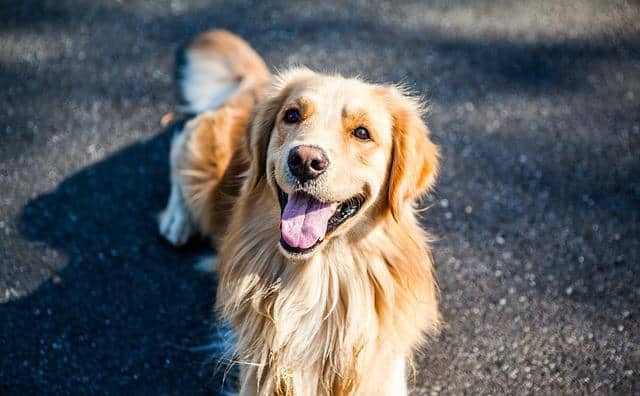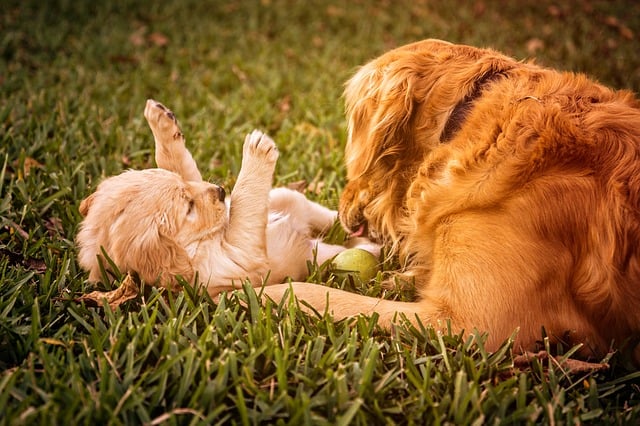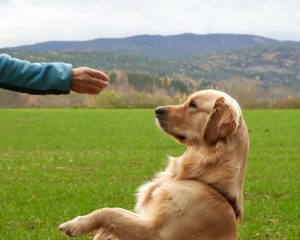The hair coat is the first and most crucial insulating layer of the organism protecting it from unfavourable thermal conditions prevailing in the environment. The coat type depends primarily on the breed of the dog and is genetically predetermined.
Contents
Among dogs, we can distinguish between hairless breeds (entirely or partially deprived of hair coat as a result of mutation and directed breeding) and short- and long-haired breeds with a single coat (only topcoat) or double coat (topcoat and undercoat).
A dog's coat has a characteristic structure and arrangement, i.e., the entire coat consists of tufts, the number determined at the puppy's birth. Depending on the breed, the number of tufts per 1 cm², and therefore the density of fur, varies greatly. Long-haired breeds can be from 400 to 600 tufts, and in shorthaired breeds, this number is almost twice as small and can be from 100 to 300 tufts. An extreme example is a Dachshund, in which there are only 2-3 tufts of hair per cm² of skin.
As the dog ages, the coat also gains its final characteristics, which ultimately affect its thermal insulation properties. In puppies, only one hair grows perpendicular to each clump's skin, giving the coat its puppy-like fluffiness. Puppy hair is replaced during the growth of the animal to the adult.
Over time, the hair bends appropriately, and depending on the breed, it grows with the undercoat creating a two-layered coat (outer: longer basic hair protecting against moisture and damage and inner: shorter, softer, denser undercoat creating an insulating and thermal layer) or not, which in effect gives a single-layered coat consisting practically only of the outer layer, i.e., longer basic hair.
Furthermore, the hair grows until it reaches the target length genetically programmed for the breed and takes on the breed's structure and texture characteristics and the specific hair type.
What affects the golden retriever's coat

- Age: You will notice changes in your pet when he is three months old. The noticeable hair growth will be on the tail, then other parts will catch up.
- Genes: If your puppy's parents took longer to grow hair, there is a good chance that the same will happen with your puppy.
- Nutrition: A proper diet will facilitate your dog's hair growth, while poor nutrition will slow down hair growth. Also, Omega 3 and 6 supplements will help in hair growth.
- Health: His coat will be long and shiny when your puppy does not have underlying medical conditions such as hormonal imbalances.
- Grooming: Routine brushing and grooming help distribute natural oils to the skin and hair while removing loose, old, and damaged hair. When bathing your dog, use the recommended shampoo to help kill bacteria, remove dirt and preserve the natural oils in your dog's coat.
By the time your dog is 18 months old, you will notice adult fur on him.
Mature golden retrievers have a coarser and darker coat than puppies.
With grooming tools, it is easy to see the changes in your dog's coat.
When he is a puppy, just run a soft brush over the coat because it is short and smooth.
Over time, you will need to add a rake or spike brush to your grooming routine.
How long does a Golden Retriever take to get a full coat?

Molting begins when your puppy is about three months old.
As your hunting dog ages, the fur grows with it.
Regardless of gender, male and female retrievers will have an adult coat by 18 months.
The stages of a Golden Retriever's coat are
- Birth: the coat is thin and wet. However, once dry, the puppies' coat becomes softer and thicker to keep them warm.
- When the golden retriever puppy is about three months old, you may notice feathering after three months. The plumage starts on the tail, spreads to the belly of the legs, and eventually covers the entire body.
- At 18 months of age, an adult coat grows on your pet. You will notice that his coat becomes fuller and slightly darker. Golden Retrievers do not shed their puppy coat. Instead, the adult hair grows and surrounds the light, creating a uniform coat.
Once your pet is an adult, it has the Golden Retriever look you've been patiently waiting for. It takes about 18 months for your pet to develop a full coat.
Your canine friend will maintain a full coat until adulthood.
Grooming

Golden retriever moults twice a year intensively - in spring and autumn. There is a lot of hair then, but removing it from carpets and furniture is quite easy. However, small amounts of hair can always fall out, especially if the dog spends a lot of time in heated rooms. A representative of this breed should be brushed once a week (only during coat change, it should be done more often) with a poodle brush with longer wires and then with a metal comb.
The bath should be conducted, if necessary, in shampoos for long-haired dogs or hypoallergenic for sensitive skin. It's worth applying conditioner or balm on the coat for a few minutes. Rinse it off and thoroughly squeeze the hair with a towel.
It is best to dry the golden retriever's coat, which is soft and quite voluminous, with a hair dryer - it will take a long time to dry itself and may crease. The hair between the pads should be clipped regularly, claws should be shortened (if they don't wear off by themselves), and ears and teeth should be checked.
How to take care of a golden retriever coat?

Golden retrievers are amiable dogs perfectly suited as companions at home. These animals are ideal companions for children, and although in their veins flows the blood of hunting dogs, they have no problems acclimatizing to the home thatch. Taking care of a golden retriever will not be a big challenge. All you need is a bit of goodwill to properly take care of this dog's upbringing, health, and appearance.
What kind of coat do golden retrievers have?
Golden retrievers belong to the group of fetching dogs, skidders, and water dogs. These animals were bred to accompany hunting birds. Because of that, their long beautiful coat is lined with a thick and waterproof undercoat. The outer fur, longer on the belly, chest, thighs, hind legs, and tail can tangle and knot if left untreated. If left to itself, the undercoat tends to feel.
In addition, hair that falls out profusely, especially during molting, and staying on the animal, can impede skin breathing. This, in turn, often leads to various skin lesions and irritation.
How often should we comb golden retrievers?

Being an owner of a golden retriever, we cannot forget about grooming treatments. It is true that in this area, we will cause problems if we do not reach for the comb for a long time. At the same time, this does not mean that the care of the pet's appearance must take a lot of time. However, it's enough to brush the pet's coat regularly, and the animal will certainly take pride in its beautiful and neat fur.
The top layer of the dog's coat requires a bit more effort. It should be brushed for 5-10 minutes at least 3 times a week. The bottom layer can be combed a little less often, for example, once a week. A little more work in maintaining the coat will have to be done during the molting period. It is worth remembering, however, that more frequent brushing of golden retrievers will minimize the amount of hair scattered around the house and make cleaning easier.
What to comb golden retriever?

As already mentioned, dogs of this breed have two types of hair - the denser located closer to the skin undercoat and the longer outer coat. Therefore, if we want to take care of a golden retriever's coat properly, we must equip ourselves with two types of tools. The easiest way to deal with an unruly undercoat is to use a poodle brush and a hook trimmer.
The latter is especially useful if the undercoat felts quickly. The hook trimmer is great for combing out and preparing the dog's fur for further trimming with a traditional trimmer or fingers equipped with special thimbles or latex pads.
Use a stainless steel comb and a soft wire or natural bristle brush to clean up the coat. With the comb, tangles and knots can be easily combed out. Incredibly convenient is a double comb, i.e., one with sparsely spaced teeth on one end and denser teeth on the other. With the help of a brush, we can get rid of dust and dead skin. This equipment is also good for giving the final polish and evenly distributing the dog's coat of natural oils.
Bathing a golden retriever

Golden retrievers love water. This does not mean, however, that the dog who likes to splash in the lake every week we should throw into the bath. Bathing a golden retriever well removes all the dirt accumulated in the dog's coat, but let's not treat the animal more often than once every two to three months.
Before proceeding with this procedure, it is necessary to properly brush the dog's fur. In addition, let's remember that for bathing, we should use a special shampoo for the dog, not preparations from our own shelf.
Fish oil will help take care of the appearance of dog hair

If you want your pet to look great, don't forget that grooming must go hand in hand with a well-balanced diet. The basis is, of course, high-quality food. However, this should be supplemented with special dog vitamins such as cod or salmon oil. Such fish oil specialities, rich in omega-3 fatty acids, DHA and EPA, help prevent allergies and skin inflammation. They also significantly impact the condition of your dog's hair. We recommend Bemix Pets Upgraded Salmon oil. Use this link to get 22% OFF.




